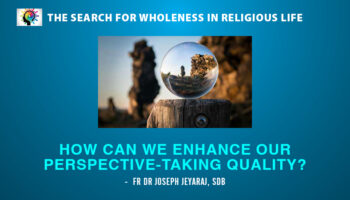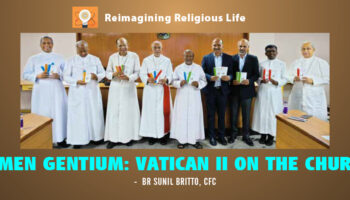Late have I loved you, O Beauty, so ancient and so new, late have I loved you! And behold, you were within me and I was outside… You were with me, and I was not with you. Those outer beauties held me far from you, yet if they had not been in you, they would not have existed at all.
You called, and cried out to me and broke open my deafness; you shone forth upon me and you scattered my blindness: You breathed fragrance, and I drew in my breath and I now pant for you: I tasted and I hunger and thirst; you touched me, and I burned for Your peace.
(Confessions, Bk. 10,27)
There is hardly a text in spiritual literature as eloquent as this to describe an experience of conversion. It resonates with our longing to move away from a fragmented existence towards an authentic fulfillment within the Divine. St. Teresa of Avila expressed it well when she said of the Confessions, “I saw myself described there.”
Augustine (354-430 AD), born in Tagaste (Souk-Ahras) in modern day Algeria close to the border with Tunisia, has had an enormous impact on theology as well as spirituality. The son of Patricius, a middle-class Roman councilor, and Monica, a devout Christian, Augustine was a brilliant student who went to Carthage at the age of seventeen. The reading of Cicero’s Hortensius led him to a greater search for wisdom. He spent nine years following Manichaeism but was disenchanted when Faustus, a Manichee bishop, could not respond to his doctrinal difficulties and dilemmas related to natural science. He applied for and was appointed the Public Orator of Milan and this put him in touch with Bishop Ambrose. At first Augustine was drawn to him because of his eloquence, but later on would learn to appreciate the Old Testament, understand the unity of the will (self-indulgent will and the will directed to good) and experience an overall integration within his life. The moment of conversion would take place in a garden during the month of August, 386, while reading Romans 13:13. Along with some of his disciples, he asked for baptism. They returned to Tagaste and began living a monastic life. He was ordained by Bishop Valerius of Hippo, succeeded him after his death and remained the bishop of Hippo for forty years.
The focus on Augustine has often been on his phenomenal contribution to theology. However, Augustine also stands out as one of the great spiritual writers in history, with the Confessions becoming a genre or style emulated by others in order to describe their spiritual experience. Two aspects stand out in the spirituality of Augustine: a) conversion and b) community life. For him, conversion was a movement from a fragmented image to a re-formation of the image of God (the Trinity) within a person through the gifts of faith and love. His philosophical formation led him to move from the senses to the interior dimension of his life. However, it was by contemplating Scripture that he experienced the reconciling and transforming power of Christ leading to a growing union with God. He explained this process is explained as consisting in seven steps through which a person moves from the sensory level to a serene contemplation of the Truth.
Augustine’s conversion was an ongoing process. Many years later, as priest and Bishop, he still experienced the need to be reconciled and renewed by God (Confessions, Book 10). This experience would be institutionalized through the Rule of Augustine, where a structure is offered to build a community of friendship, joyful hope and Christian charity.
Augustine’s search for the Divine finds many parallels among the sages within the Indian sub-continent. His life, as well as his spiritual insights, continues to inspire and guide authentic seekers as they struggle with their own conversion process.

To subscribe to the magazine Contact Us





